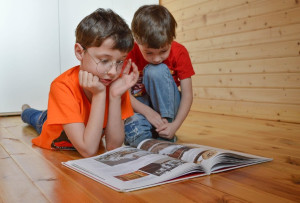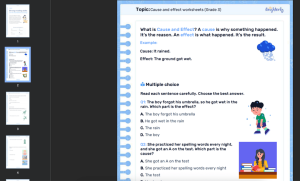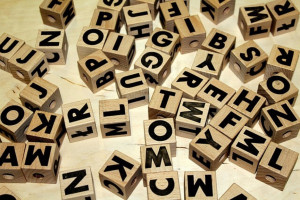What Are the Best At-Home Activities to Boost Your Child’s Math and Reading?
As a parent, you should be aware that consistent home practice is key to improving math and reading. But how to organize learning at home for kids?
Besides considering their needs and learning styles, you should make the experience structured and fun. Luckily, there are plenty of options, from having a Brighterly 4th grade math tutor to singing math and reading songs.
Read on to explore the best reading and math activities for kids at home and find out how to apply them.
Top activities for kids at home
- Reading decoding
- Using worksheets
- Singing math and reading songs
- Reading math books
- Games
- Word-building challenges
Activity #1: Practice reading decoding
That’s right, decoding is one of the leading learning activities for kids at home. Why? It teaches children to sound out written words using phonics. In its turn, it helps them learn to connect letters to sounds and read new words. Decoding develops reading fluency, so it’s best for early readers who study in 1-3 grades.
How to practice reading decoding?
Offer activities that allow playing with letters and sounds. For instance, use flashcards and/or simple books. With them, a child can practice sounding out words like c-a-t or d-o-g. Upon practicing, they will be able to recognize the words on site. What are other techniques to practice decoding and phonics learning at home for kids?
- Clapping syllables
- Segmenting words into sounds
- Reading them out loud
Notably, you can back them with decoding games and phonics worksheets.
Activity #2: Using worksheets
One more effective way for learning at home for kids is focused practice sheets and printables. They are universal and suit both 5th and 9th grade students. Moreover, they are truly a great support to programs for struggling readers.
How does this learning activity help?
Worksheets provide targeted reviews and ensure the practice after lessons with teachers. Even after one-on-one math and reading learning sessions, worksheets are extremely useful, as they reinforce the learning by repetition and step-by-step problems.
- As a part of reading activities, worksheets can cover word problems, phonics patterns,
sight words, and rhyming - As a part of math activities for kids at home, worksheets can cover arithmetic drills, math
puzzles, and such concepts as subtraction or division
Ultimately, to make it work, it’s essential to establish a routine. Completing a short 10-minute worksheet daily would bring great long-term results.
Activity #3: Singing math and reading songs
You’d be astonished at how often teachers use songs to improve kids’ math and reading skills. Songs and chants are a lively way to learn math concepts and support reading skills, benefiting younger kids, from grades 1-4.
Why does singing songs help?
- In terms of reading, songs offer repetitive patterns that allow children to break words into parts. Besides, letter songs greatly support phonological awareness. Generally, music enhances memory; thus, it helps kids remember words and connect ideas using rhythm and rhyme.
- Regarding math, when singing, it’s easier for kids to recall counting and improve their number sense.
For your math and reading program at home, you can use such songs and activities as “One, Two, Buckle My Shoe,” “Ten Little Aeroplanes,” ABC songs, clapping syllables, and nursery rhymes.
Activity #4: Reading math books
Do you know that you can simultaneously boost kids in math and reading? Right, it’s possible by reading math books. Besides, it’s a pretty effective strategy for kids in grades 2-5.
The reason for its effectiveness is that contextual stories make math relatable and support reading skills. You can use storybooks to feature math topics. For instance, books can be about counting bugs or dividing pies to support the reason to study math.
Via a math-themed story, you can introduce new vocabulary, give situations where math can be used, and support math visual aids. Moreover, such storybooks offer room to integrate questions. They allow knowledge to stick and develop both math and reading skills.
Activity #5: Learning via games
What about engaging and fun learning activities for kids at home? Well, games and interactions should do the trick. They make practice active and social, so kids of different ages love them. You can use board games for math and card games for reading, or simply build a scavenger hunt game around one of the topics.
Other ways to improve math and reading skills via games
- Use a “Battleship” game on a hundred chart to practice number recognition
- Leverage a treasure hunt to teach a kid to count objects and collect things
- Try word, rhyming games, or letter puzzles to strengthen phonics and vocabulary
Activity #6: Word-building challenges
World-building activities turn vocabulary and spelling into a fun puzzle. And it’s a pretty fun experience for kids in grades 2-6 who already love to read short texts.
How to boost kids’ math and reading skills with word-building?
- You can use letter tiles, magnets, and even online apps. Just write a long word and ask them to create 3 or 4 shorter ones from it
- The everyday small challenges would enhance spelling, logic, and reading comprehension. They can help them recognize root words, prefixes, and suffixes
- An excellent idea is to try timed challenges or themed rounds, or to make it fun by
offering to create silly sentences with them
How Brighterly supports learning from home
Another effective way to boost kids in math and reading is via tutoring. And that’s where such platforms as Brighterly come into light. Brighterly is a school-supplemental K-12 tutoring platform that provides 1:1 personalised math and reading programs for kids. With it, you kids would get a customised plan with activities that will suit their needs and level.
What are the main Brighterly features?
- Expert math and reading tutors. Brigtherly’s certified tutors find an approach to every child. They help raise kids’ confidence and ignite a love of learning among them via games and interaction
- Customised lessons for every kid. After a first session, tutors create an individual plan for one-on-one math and reading learning. It brings in personalised tasks and meets specific needs
- Additional worksheets and tests. Beyond live sessions, Brighterly offers thousands of worksheets and tests to reinforce math and reading skills
How to improve math and reading skills at home? Conclusion
From decoding games and worksheets to songs, puzzles, and quizzes, these activities for kids at home can easily boost their skills. They help memorize and introduce concepts, and prove that home learning doesn’t have to feel like boring homework.
Yet, when learning at home, practice is important. So, if you don’t have enough time for it, think of available 1:1 tutoring options.







